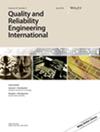Assessing changes in reliability methods over time: An unsupervised text mining approach
IF 2.8
3区 工程技术
Q3 ENGINEERING, INDUSTRIAL
引用次数: 0
Abstract
Reliability engineering faces many of the same challenges today that it did at its inception in the 1950s. The fundamental issue remains uncertainty in system representation, specifically related to performance model structure and parameterization. Details of a design are unavailable early in the development process and therefore performance models must either account for the range of possibilities or be wrong. Increasing system complexity has compounded this uncertainty. In this work, we seek to understand how the reliability engineering literature has shifted over time. We exe cute a systematic literature review of 30,543 reliability engineering papers (covering roughly a third of the reliability papers indexed by Elsevier's Engineering Village. Topic modeling was performed on the abstracts of those papers to identify 279 topics. The hierarchical topic reduction resulted in the identification of eight top‐level method topics (prognostics, statistics, maintenance, quality control, management, physics of failure, modeling, and risk assessment) as well as three domain‐specific topics (nuclear, infrastructure, and software). We found that topics more associated with later phases in the development process (such as prognostics, maintenance, and quality control) have increased in popularity over time relative to other topics. We propose that this is a response to the challenges posed by model uncertainty and increasing complexity.评估可靠性方法随时间的变化:无监督文本挖掘方法
今天,可靠性工程面临着许多与二十世纪五十年代初创时相同的挑战。最根本的问题仍然是系统表示的不确定性,特别是与性能模型结构和参数化有关的不确定性。设计的细节在开发过程的早期无法获得,因此性能模型必须考虑到各种可能性,否则就是错误的。系统复杂性的增加加剧了这种不确定性。在这项工作中,我们试图了解可靠性工程文献是如何随着时间的推移而变化的。我们对 30,543 篇可靠性工程论文(约占 Elsevier's Engineering Village 索引的可靠性论文的三分之一)进行了系统的文献综述。我们对这些论文的摘要进行了主题建模,以确定 279 个主题。通过对主题进行分级,确定了八个顶级方法主题(预后、统计、维护、质量控制、管理、故障物理、建模和风险评估)以及三个特定领域主题(核、基础设施和软件)。我们发现,随着时间的推移,与开发过程后期阶段更相关的主题(如预测、维护和质量控制)相对于其他主题更受欢迎。我们认为,这是为了应对模型不确定性和复杂性增加所带来的挑战。
本文章由计算机程序翻译,如有差异,请以英文原文为准。
求助全文
约1分钟内获得全文
求助全文
来源期刊
CiteScore
4.90
自引率
21.70%
发文量
181
审稿时长
6 months
期刊介绍:
Quality and Reliability Engineering International is a journal devoted to practical engineering aspects of quality and reliability. A refereed technical journal published eight times per year, it covers the development and practical application of existing theoretical methods, research and industrial practices. Articles in the journal will be concerned with case studies, tutorial-type reviews and also with applications of new or well-known theory to the solution of actual quality and reliability problems in engineering.
Papers describing the use of mathematical and statistical tools to solve real life industrial problems are encouraged, provided that the emphasis is placed on practical applications and demonstrated case studies.
The scope of the journal is intended to include components, physics of failure, equipment and systems from the fields of electronic, electrical, mechanical and systems engineering. The areas of communications, aerospace, automotive, railways, shipboard equipment, control engineering and consumer products are all covered by the journal.
Quality and reliability of hardware as well as software are covered. Papers on software engineering and its impact on product quality and reliability are encouraged. The journal will also cover the management of quality and reliability in the engineering industry.
Special issues on a variety of key topics are published every year and contribute to the enhancement of Quality and Reliability Engineering International as a major reference in its field.

 求助内容:
求助内容: 应助结果提醒方式:
应助结果提醒方式:


